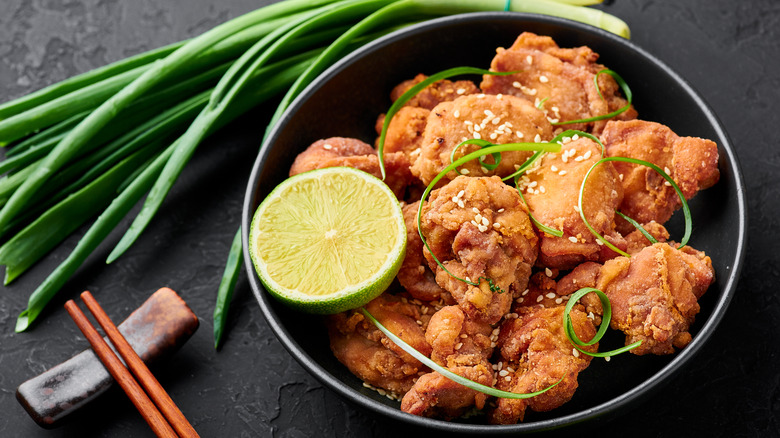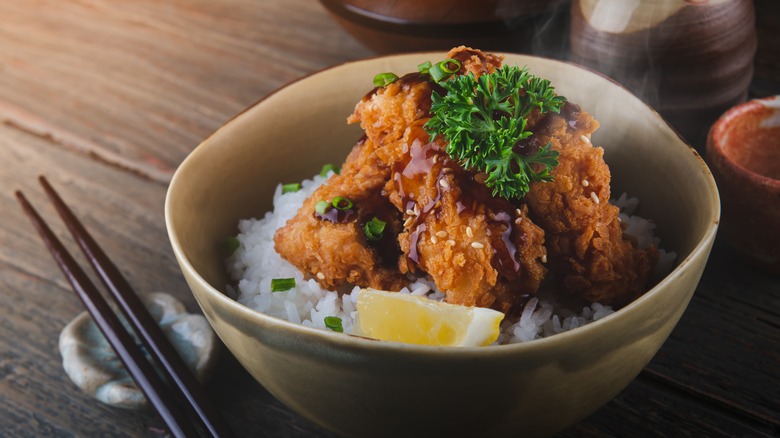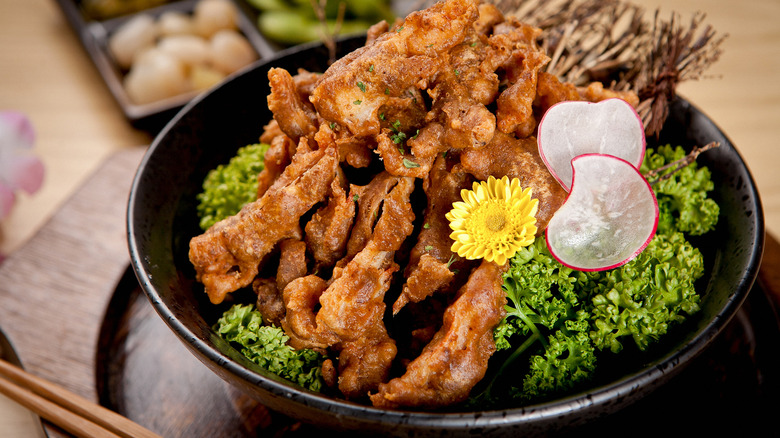Japanese Fried Chicken May Lack Bones But Not Flavor
It's hard to say exactly who first dipped a chicken in flour and gave it a hot oil bath, but whoever it was earned the world's gratitude at that moment. The BBC claims that while common knowledge dictates it was African-American slaves that first fried chicken, there is a competing school of thought that insists it was a Scottish invention shared by immigrants who would have taught the early Americans.
Regardless of who invented this delicacy, today it is enjoyed by cultures around the world in many different forms. Indians enjoy chicken 65, Austria has its backhendl, and Brazil has its coxinha. Regardless of how you slice or fry your chicken, it always seems to create a delicious treat to be enjoyed at lunch, on holidays, or in the middle of the night.
Broadsheet reports this isn't a coincidence, either, as the crisp skin of fried chicken sends a message to our brains that the food is fresh. This adds to our enjoyment of the meal and creates a subconscious signal that it's high quality.
According to the BBC, it's tradition for many Japanese families to enjoy American-style fried chicken on Christmas Day. It may seem odd, although the country has its own — arguably superior — version of fried chicken called karaage.
What's great about karaage
Karaage is much more than a Japanese style of fried chicken. In fact, it's part of the larger family of agemono, which are Japanese deep-fried foods. Sakuraco points out karaage is also a specific style of frying food. This can include meats or vegetables, but tori no karaage, or fried chicken, is one of the most common (via Cook & Meshiagare). This is similar to tempura, a style of frying foods common in Japan. Whereas tempura is famous for its thick, almost fluffy breading, karaage is known for its extra crispy skin and complex flavors. This is also what sets it apart from other styles of fried chicken.
According to The Takeout, great tori no karaage starts with high-quality meat. Traditionally, this dish is made using only dark meat, like chicken thighs. That means the meat stays extra juicy and flavorful after it's been fried. It also means it requires a bit of expertise to debone chicken thighs if preparing at home. Karaage can also be cut into smaller pieces, which creates more surface area for a crispy outer shell and easier eating.
The Takeout explains another major difference is the marinade. Karaage is typically marinaded in a mixture of mirin, soy sauce, sake, minced garlic, and ginger to give it a complex and flavorful kick. All these elements create a rich and deeply flavorful meat that serves as the base for the deliciously crispy skin.
Potato starch is key
According to The Takeout, one of the main differences between karaage and American-style fried chicken is the dry dredge used to coat the meat. In the U.S., flour is the most common option. However, many Asian cultures prefer using corn or potato starch instead. This is key to karaage's absurdly crispy exterior.
The Takeout claims that using potato starch (not potato flour) creates an almost glass-like crispy exterior that shatters as you bite into the chicken. But the reason for this has to do with two qualities of potato starch (via Cook's Illustrated). The first is that it has a greater ability to absorb liquid than flour. This means the dry coating will fluff up even more when fried to create an open, crisp structure on the outside of the meat.
Cook's Illustrated says potato starch is also a great coating for frying food because it has a higher percentage of amylose. During the frying process, amylose and another starch named amylopectin tend to form cross-links together. This creates greater bonds within the structure of the coating that gives a satisfying crack when cutting into the meat. Flour typically has less amylose than potatoes or corn starch and, thus, doesn't fry up with the same effect. Allrecipes adds that you can still make karaage at home without potato starch, but the results just won't be the same.


